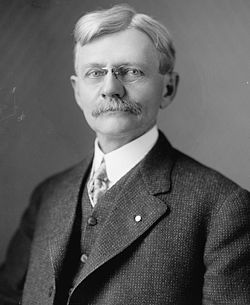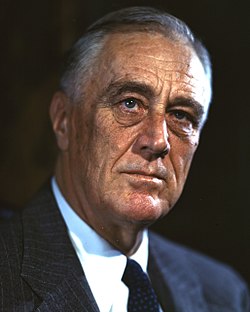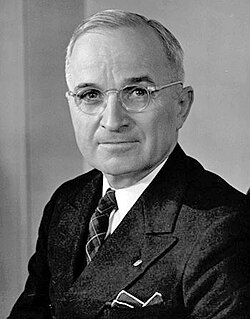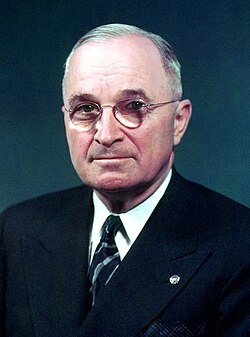19th century
1828, 1832
| Presidential nominee | 1828 (won), 1832 (won) | Vice presidential nominee | |
|---|---|---|---|
| Andrew Jackson of TN (1767–1845)  |
|
| John C. Calhoun of SC (1782–1850)  (1828) |
| Martin Van Buren of NY (1782–1862)  (1832) | ||
| Opponent(s) John Quincy Adams (National Republican) |
| Opponent(s) Richard Rush (National Republican) | |
| Opponent(s) Henry Clay (Whig) William Wirt (Anti-Masonic) |
| Opponent(s) John Sergeant (Whig) Amos Ellmaker (Anti-Masonic) | |
1836, 1840
| Presidential nominee | 1836 (won), 1840 (lost) | Vice presidential nominee | |
|---|---|---|---|
| Martin Van Buren of NY (1782–1862)  |
|
| Richard Johnson of KY (1780–1850)  |
| Opponent(s) William Harrison (Northern Whig) Hugh White (Southern Whig) |
| Opponent(s) Francis Granger (Northern Whig) John Tyler (Southern Whig) | |
| Opponent(s) William Harrison (Whig) |
| Opponent(s) John Tyler (Whig) | |
1844
| Presidential nominee | 1844 (won) | Vice presidential nominee | |
|---|---|---|---|
| James Polk of TN (1795–1849) 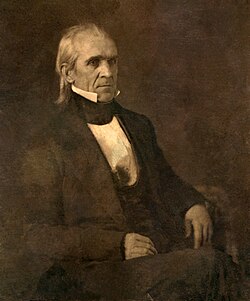 |
|
| Silas Wright of NY (1795–1847) 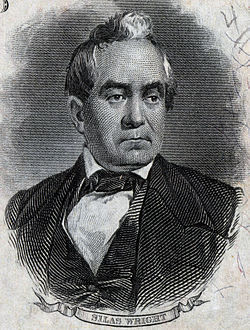 (1844) [4] |
| George Dallas of PA (1792–1864)  (1844) | ||
| Opponent(s) Henry Clay (Whig) James Birney (Liberty) |
| Opponent(s) Theodore Frelinghuysen (Whig) Thomas Morris (Liberty) | |
1848
| Presidential nominee | 1848 (lost) | Vice presidential nominee | |
|---|---|---|---|
| Lewis Cass of MI (1782–1866) 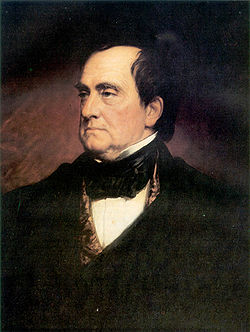 |
|
| William Butler of KY (1791–1880)  |
| Opponent(s) Zachary Taylor (Whig) Martin Van Buren (Free Soil) |
| Opponent(s) Millard Fillmore (Whig) Charles Adams (Free Soil) | |
1852
| Presidential nominee | 1852 (won) | Vice presidential nominee | |
|---|---|---|---|
| Franklin Pierce of NH (1804–1869)  |
|
| William King of AL (1786–1853)  |
| Opponent(s) Winfield Scott (Whig) John Hale (Free Soil) |
| Opponent(s) William Graham (Whig) George Julian (Free Soil) | |
1856
| Presidential nominee | 1856 (won) | Vice presidential nominee | |
|---|---|---|---|
| James Buchanan of PA (1791–1868)  |
|
| John Breckinridge of KY (1821–1875) 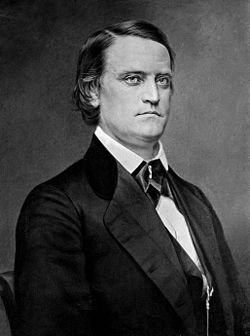 |
| Opponent(s) John Frémont (Republican) Millard Fillmore (Know Nothing) |
| Opponent(s) William Dayton (Republican) Andrew Donelson (Know Nothing) | |
1860
| Presidential nominee | 1860 (lost) [5] | Vice presidential nominee | |
|---|---|---|---|
| Stephen Douglas of IL (1813–1861)  |
|
| Herschel Johnson of GA (1812–1880)  |
| Opponent(s) Abraham Lincoln (Republican) John Breckinridge (Southern Democrats) John Bell (Constitutional Union) |
| Opponent(s) Hannibal Hamlin (Republican) Joe Lane (Southern Democrats) Edward Everett (Constitutional Union) | |
1864
| Presidential nominee | 1864 (lost) | Vice presidential nominee | |
|---|---|---|---|
| George McClellan of NJ (1826–1885) 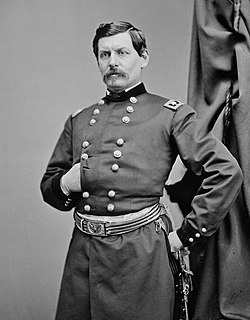 |
|
| George Pendleton of OH (1825–1889)  |
| Opponent(s) Abraham Lincoln (National Union) |
| Opponent(s) Andrew Johnson (National Union) | |
1868
| Presidential nominee | 1868 (lost) | Vice presidential nominee | |
|---|---|---|---|
| Horatio Seymour of NY (1810–1886)  |
|
| Francis Blair of MO (1821–1875)  |
| Opponent(s) Ulysses S. Grant (Republican) |
| Opponent(s) Schuyler Colfax (Republican) | |
1872
| Presidential nominee | 1872 (lost) | Vice presidential nominee | |
|---|---|---|---|
| Horace Greeley of NY (1811–1872)  |
|
| Gratz Brown of MO (1826–1885)  |
| Opponent(s) Ulysses S. Grant (Republican) |
| Opponent(s) Henry Wilson (Republican) | |
1876
| Presidential nominee | 1876 (lost) | Vice presidential nominee | |
|---|---|---|---|
| Samuel Tilden of NY (1814–1886)  |
|
| Thomas Hendricks of IN (1819–1885)  |
| Opponent(s) Rutherford Hayes (Republican) |
| Opponent(s) William Wheeler (Republican) | |
1880
| Presidential nominee | 1880 (lost) | Vice presidential nominee | |
|---|---|---|---|
| Winfield Hancock of PA (1824–1886)  |
|
| William English of IN (1822–1896)  |
| Opponent(s) James Garfield (Republican) James Weaver (Greenback) |
| Opponent(s) Chester Arthur (Republican) Barzillai Chambers (Greenback) | |
1884, 1888, 1892
| Presidential nominee | 1884 (won), 1888 (lost), 1892 (won) | Vice presidential nominee | |
|---|---|---|---|
| Grover Cleveland of NY (1837–1908)  |
|
| Thomas Hendricks of IN (1819–1885)  (1884) |
| Allen Thurman of OH (1813–1895)  (1888) | ||
| Adlai Stevenson of IL (1835–1914) 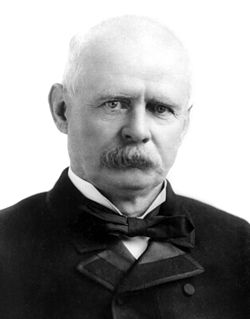 (1892) | ||
| Opponent(s) James Blaine (Republican) St. John (Prohibition) Benjamin Butler (Greenback) |
| Opponent(s) John Logan (Republican) William Daniel (Prohibition) Absolom West (Greenback) | |
| Opponent(s) Benjamin Harrison (Republican) Clinton Fisk (Prohibition) Alson Streeter (Union Labor) |
| Opponent(s) Levi Morton (Republican) John Brooks (Prohibition) Charles Cunningham (Union Labor) | |
| Opponent(s) Benjamin Harrison (Republican) James Weaver (Populist) John Bidwell (Prohibition) |
| Opponent(s) Whitelaw Reid (Republican) James Field (Populist) James Cranfill (Prohibition) | |
1896, 1900
| Presidential nominee | 1896 (lost), 1900 (lost) | Vice presidential nominee | |
|---|---|---|---|
| William Jennings Bryan of NE (1860–1925)  |
|
| Arthur Sewall of ME (1835–1900)  (1896) |
| Adlai Stevenson of IL (1835–1914)  (1900) | ||
| Opponent(s) William McKinley (Republican) |
| Opponent(s) Garret Hobart (Republican) Thomas E. Watson (Populist) | |
| Opponent(s) William McKinley (Republican) John Woolley (Prohibition) |
| Opponent(s) Theodore Roosevelt (Republican) Henry Metcalf (Prohibition) | |




